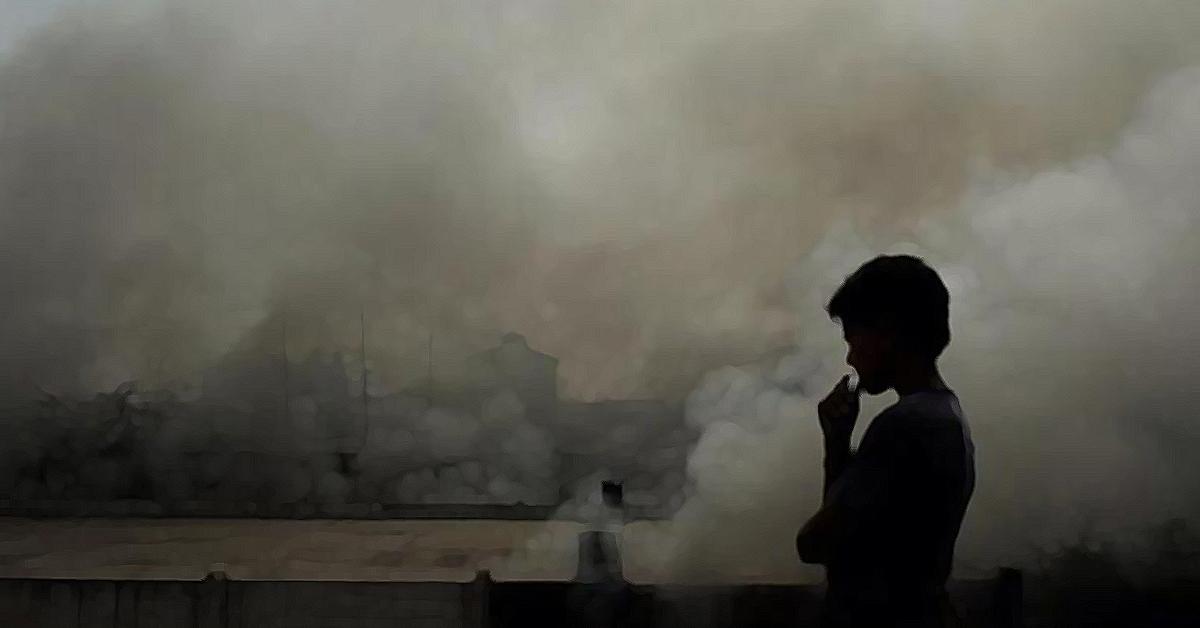•A recently published study points to a link between lower air quality and a person’s negative mood.
•Comparing the global air quality index to the most recent World Happiness Report seems to support this as well.
•These findings emphasize the need for stronger policies on safety and environmental sustainability.
The moment when dark-gray smoke from a passing vehicle fills the air around you is anything but happy. Your mood instantly sours, as you choke and fumble for a handkerchief. All of a sudden, the entire street seems smokey and foul!
You’re not alone in feeling this way, though. In fact, recent studies point to a significant link between people’s happiness and the quality of the air around them.
The link between air pollution and your bad mood
The study, published in Nature Human Behaviour, suggests that higher levels of pollution affect people’s moods on social media–and not in a nice way.
Social media posts may serve as a real-time measure of a person’s mood, according to research leader Siqi Zheng of the MIT Department of Urban Studies and Planning and Center for Real Estate. (This, of course, takes into account the person’s location and the time the post was made.)
The subjects of the study were Chinese users of the microblogging site Sina Weibo (which some call the “Chinese Twitter”). The researchers determined the mood of each Sina Weibo user by analyzing 210 million geotagged updates with a machine-learning algorithm.
The data was correlated with the daily PM 2.5 concentration, or ultrafine particulate matter in the air, from the reported air quality readings by China’s Ministry of Environmental Protection.
The researchers found that for every standard deviation increase in the PM2.5 concentration, there was a decrease of 0.043 (or 0.046) standard deviation in the users’ happiness index.
An earlier study used a similar method of analyzing tweets from San Francisco-based users. Researchers from the University of Vermont noted a decrease in negative tweets from users who visit parks and urban greenspace areas.
Additionally, Zheng reported that people seemed more likely to engage in impulsive and risky behavior on more polluted days.
The Air Quality Index versus the World Happiness Report
The question is: Do these findings hold true in the Philippines as well? A quick comparison between the World Bank Group’s most recent Air Quality Index and the 2019 World Happiness Report seems to support that.
Looking at the Air Quality Index, the reported PM 2.5 concentration in the Philippines is 18 micrograms (μg or mcg) per cubic meter. For comparison, Nepal appears to have the worst air quality in the world, at 100 mcg per cubic meter.
Meanwhile, the Philippines is the 69th country on the World Happiness Report, with Finland at the top of the list. The World Happiness Report ranks countries based on six variables: income, freedom, trust, healthy life expectancy, social support and generosity. It’s worth noting that Finland is among the countries with the lowest air pollution levels (6 mcg per cubic meter).
Air Pollution: Finland (least polluted, 6 mcg/cu.m) → Philippines (18 mcg/cu.m) → South Sudan (46 mcg/cu.m) → Nepal (most polluted, 100 mcg/cu.m)
Happiness: Finland (1st) → Philippines (69th) → Nepal (100th) → South Sudan (last on the list, 156th)
Admittedly, this comparison is rather simplistic. However, it does point to an interesting relationship between environmental protection and emotional (and economic) positivity.
Economic and environmental sustainability
Based on these findings, one can view pollution as a major socioeconomic indicator.
A feature of economic sustainability is the ability to make systems efficient by reducing or restructuring paths that create waste. In that sense, higher-income countries are more capable of addressing environmental degradation than lower-income countries.
Additional research on the day-to-day effects of pollution should prompt policies focusing on safety and environmental sustainability. Indeed, the systems governing environmental and health policies are complex, considering how they must go hand in hand with economic growth.
If anything, though, the thought of a clearer future–literally and figuratively–might be enough to put a smile on everyone’s faces. –MF
Cover photo: India Today
References
- https://arxiv.org/abs/1807.07982
- https://data.worldbank.org/indicator/en.atm.pm25.mc.m3
- https://edition.cnn.com/travel/article/worlds-happiest-countries-united-nations-2018/index.html
- https://phys.org/news/2019-01-china-link-happiness-air-quality.html
- https://s3.amazonaws.com/happiness-report/2019/WHR19.pdf
- https://www.scmp.com/business/global-economy/article/1956350/finding-balance-between-economic-and-environmental
- https://www.nature.com/articles/palcomms201769
- https://www.nature.com/articles/s41562-018-0521-2
- https://www.sciencedirect.com/science/article/abs/pii/S1062940815000236
- https://www.unece.org/environmental-policy/conventions/envlrtapwelcome/cross-sectoral-linkages/air-pollution-and-economic-development.html
Author: Jess Vilvestre
Jess is on her way to getting her license in engineering. On the side of studying, she spends her time writing, cooking, and watching movies and plays. Jess has also been working with an education project that capacitates STEM learners with portable science activity kits.







